30.11.2021
Here’s what it takes to transport an NOAA satellite to from Colorado to Florida
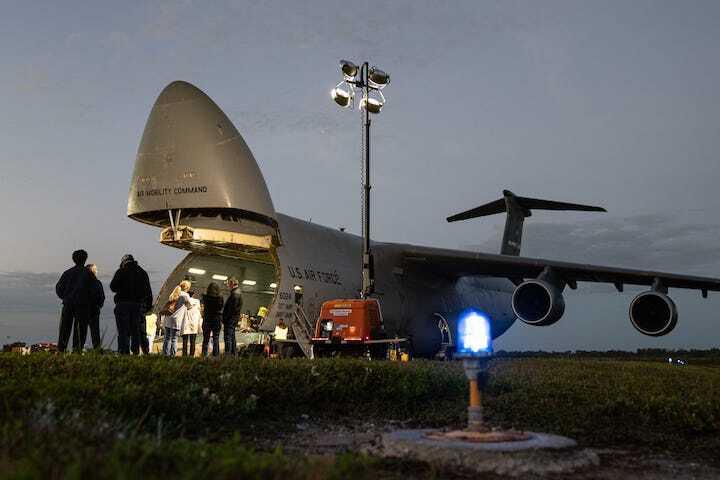
An Air Force C-5M Super Galaxy transport is seen at Kennedy Space Center's Launch and Landing Facility on Wednesday, Nov. 10, 2021, with the NOAA's GOES-T spacecraft. Once on orbit, the satellite will help forecasters and scientists better understand weather and climate.
The unmistakable roar of four jet engines broke the dead-of-night silence at Kennedy Space Center earlier this month, marking the arrival of a massive Air Force transport at the landing facility once used for space shuttles.
But this red-eye flight from Buckley Space Force Base near Denver, Colorado, had more than just a few dozen passengers onboard. Deep in the belly of the C-5M Super Galaxy was a full-blown semitruck ready to roll out with a National Oceanic and Atmospheric Administration weather satellite in an attached container.
The 247-foot-long aircraft with a nearly identical wingspan is actually longer than the United Launch Alliance Atlas V rocket that will launch the satellite — named GOES-T — no earlier than March 1, 2022. Set to a powerful configuration with four add-on solid rocket boosters, Atlas V will reach about 191 feet in height at nearby Cape Canaveral Space Force Station.
The sheer size of the California-based C-5 meant Lockheed Martin, builder of the satellite, could simply roll the satellite out of its factory near Denver, transport it to Buckley SFB, and back up the semitruck into the aircraft before doing the opposite after landing. As with most things space-related, however, it's not as simple as it sounds.
About two hours after the 4:15 a.m. touchdown at the Launch and Landing Facility, semitruck driver Corey Spears – mentioned as one of the best drivers Lockheed has on its payroll – began inching the truck out, a delicate task that seemed imperceptibly slow. At least a half dozen other Lockheed employees and Air Force personnel helped guide the satellite container out using a custom container and trailer that can lift and lower itself based on the incline of the Super Galaxy's payload bay ramp.
Just over three hours after landing, the semitruck and climate-controlled GOES-T container were entirely out of the aircraft and safely on the flight line, ready for the next leg of the trip to Astrotech Space Operations' processing facility in Titusville. NOAA partners with NASA for launches of its GOES weather satellites.
Several of the dozens of Lockheed employees who arrived on the C-5 will spend the coming months here on the Space Coast, prepping the spacecraft for its launch and subsequent 10-year mission 22,236 miles above Earth.
"This is one of a series of steps that have to happen to get the satellite in orbit and sending back weather data," Dan Lindsey, a researcher and spokesperson at NOAA. "NASA is very good at public spacecraft development, instrument development, launching assets to space, and getting them on orbit, so that's the role they play."
Once up and running, GOES-T will become GOES-18. It will replace GOES-17, which launched from the Cape in 2018 as GOES-S but suffered a cooling system issue. Though it still gets over 90% of the needed data, Lindsey said, GOES-T will move to replace it and the damaged spacecraft will be used as a spare.
GOES-17 currently covers the western half of the U.S.; GOES-16, launched in 2016, is responsible for the eastern side. Both have been responsible for an incredible boost in imagery and data, especially during hurricane season that runs from June to November.
Just like previous GOES satellites, this T variant will use several instruments to gather data on local and national weather, lightning, hurricanes, and more for general forecasting and research. Its findings will also help with understanding the impacts of climate change.
After a brief on-orbit test period, Lockheed will "hand over" the satellite to the NOAA for an expected 10-year lifespan. But before then, company employees that traveled with the satellite will help oversee testing, more transport, encapsulation in its payload fairing, and eventually launch day.
Living on the Space Coast
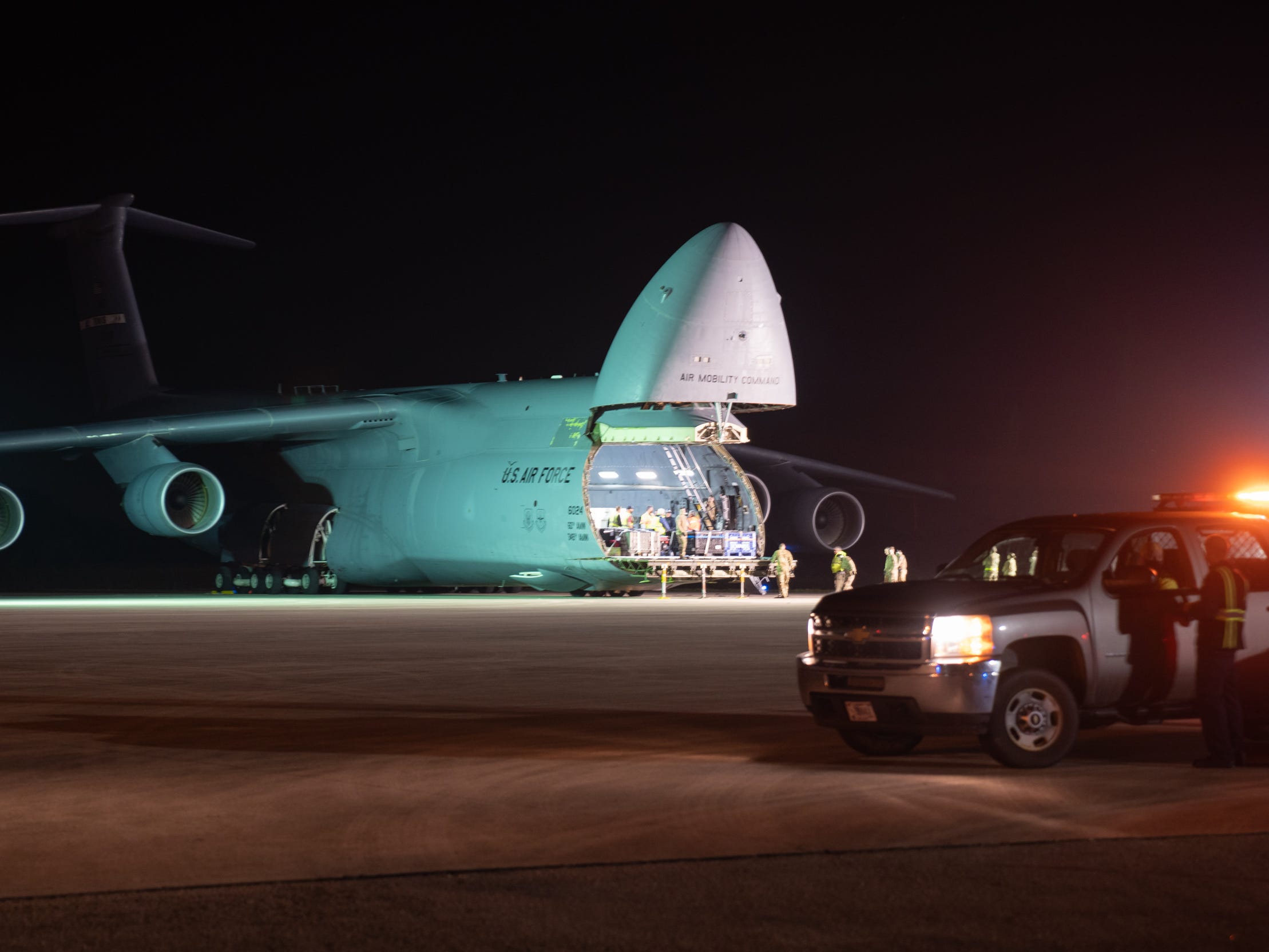
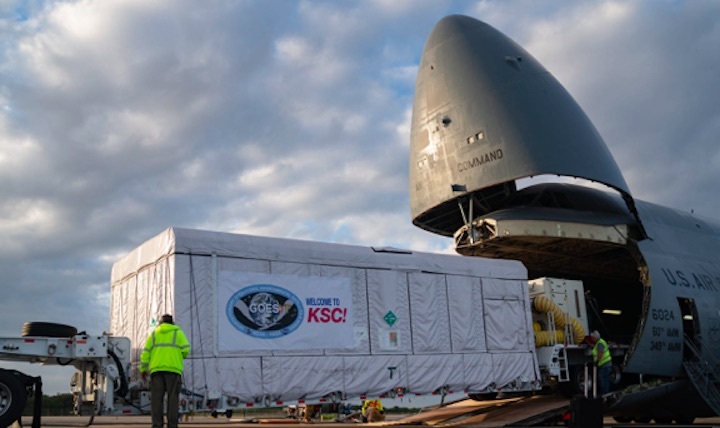
Photos: Air Force C-5M Super Galaxy delivers NOAA's GOES-T satellite to Florida
Like most spacecraft that arrive in Florida months before launch, several employees travel with Air Force transports, then briefly live on the Space Coast to help with processing.
AJ Sandora, senior manager of assembly, test, and launch operations at Lockheed Martin, is one of about 27 people who will process GOES-T. Including engineering teams that come and go, he said there will be 45 to 65 people working at Astrotech. That all leads up to 12 days before launch when the satellite is slowly rolled out of the facility and over to Atlas V's Launch Complex 41.
"I'll be bringing my wife here and a lot of folks try to bring their families here too," Sandora said. "With the spacecraft here, we still have to monitor things and make sure everybody stays safe, so we usually keep a local team here just in case but a lot of folks will take some time off and rotate for the holidays."
But it's not just people – forklift drivers hauled out package after package stored ahead of the semitruck. Included were crane attachments, tools, supplies, and other equipment specific to GOES-T that must be available at Astrotech.
"The biggest thing I think people don't realize is how many people this takes," Sandora said. "It takes an army to pull this off. It's not just us who are staying here for the whole time, but it's everybody."
Quelle: Florida Today
----
Update: 29.12.2021
.
NASA Invites Media to NOAA’s Weather Observing Satellite Launch
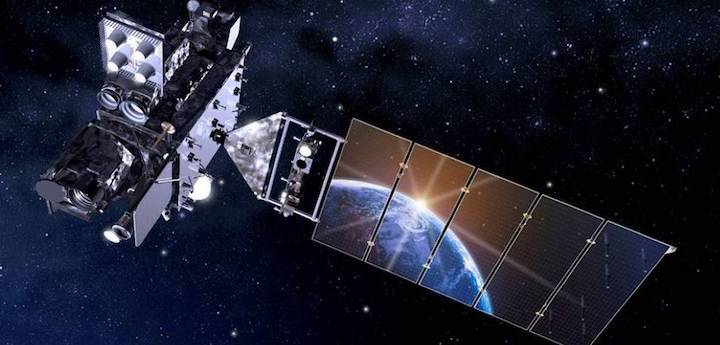
Media accreditation is now open for the upcoming launch of the National Oceanic and Atmospheric Administration (NOAA) GOES-T satellite, the Western Hemisphere’s most advanced weather observing and environmental monitoring system.
GOES-T is scheduled to launch March 1, 2022, on a United Launch Alliance Atlas V 541 rocket from Space Launch Complex-41 at Cape Canaveral Space Force Station in Florida.
Media prelaunch and launch activities will take place at Kennedy Space Center in Florida. Media wishing to take part in person must apply for credentials at:
International media residing in the United States must apply by Saturday, Jan. 8, 2022. U.S. media must apply by Thursday, Jan. 27, 2022.
NASA’s media accreditation policy is online. For questions about accreditation, please email: ksc-media-accreditat@mail.nasa.gov. For other mission questions, please contact Kennedy’s newsroom at: 321-867-2468.
Credentialed media will receive a confirmation email with the latest COVID-19 guidelines. If you have special logistical requests, such as space for satellite trucks, tents, or electrical connections, please contact Allison Tankersley at allison.p.tankersley@nasa.gov by Feb. 21, 2022.
About GOES-T
NOAA manages the GOES-R Series Program through an integrated NOAA-NASA office, administering its ground system contract, operating the satellites, and distributing their data to users worldwide.
GOES-T will be renamed GOES-18 once it reaches geostationary orbit. Following a successful orbital checkout of its instruments and systems, GOES-18 will go into operational service as GOES West. In this position, the satellite will provide critical data for the U.S. West Coast, Alaska, Hawaii, Mexico, Central America, and the Pacific Ocean.
The launch is managed by NASA’s Launch Services Program based at Kennedy, America’s multi-user spaceport. NASA’s Goddard Space Flight Center in Greenbelt, Maryland, oversees the acquisition of the GOES-R satellite and instruments. Lockheed Martin designs, creates, and tests the GOES-R Series satellites. L3Harris Technologies provides the main instrument payload, the Advanced Baseline Imager, and the ground system, which includes the antenna system for data reception.
Quelle: NASA
----
Update: 4.02.2022
.
GOES-T launch preparations underway
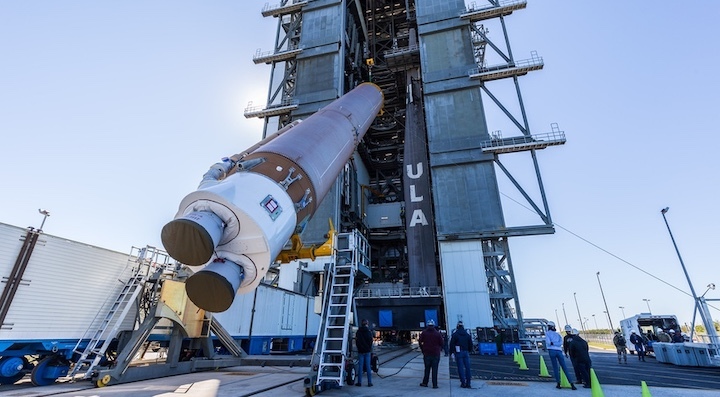
WASHINGTON — Preparations are underway for the launch of the next in a series of geostationary weather satellites that will also mark the end of a decades-long streak for one company.
At a briefing organized by the National Oceanic and Atmospheric Administration Feb. 1, representatives of several agencies and companies said they were on track for a March 1 launch of the GOES-T weather satellite on an Atlas 5 from Cape Canaveral, Florida. The spacecraft, the third of four in the GOES-R series, will replace GOES-17 at the GOES-West orbital location in geostationary orbit at 137 degrees west.
Scott Messer, program manager for NASA launch services at United Launch Alliance, said the company had started stacking the Atlas 5 that will launch GOES-T. The spacecraft, encapsulated within its five-meter payload fairing, is scheduled to be installed on the rocket Feb. 15 for final tests before rollout and launch.
The launch campaign for GOES-T will be similar to its two predecessors, GOES-R and GOES-S, which also launched on the 541 version of the Atlas 5 with four solid-fuel boosters. Messer said there will be some minor adjustments in this launch to improve its accuracy and extend the life of GOES-T by reducing the amount of propellant the spacecraft itself uses to reach geostationary orbit.
“With each successive GOES satellite, we have gone through a process of optimizing the trajectory that we fly in order to provide a better injection orbit to allow more spacecraft life,” he said. “In this case, we were able to do something that gave the spacecraft another four or five years’ worth of lifetime.”
The GOES-T launch continues a streak for ULA and the two vehicle families it inherited when the joint venture was created more than 15 years ago. “ULA and our heritage launch vehicles, Atlas and Delta, have launched every GOES satellite that’s ever been launched,” Messer said. That dates back to the launch of GOES-A on a Delta rocket in 1975.
That streak, though, ends with GOES-T. NASA announced in September it awarded a contract to SpaceX for the final spacecraft in the GOES-R series, GOES-U, slated for launch in April 2024 on a Falcon Heavy. ULA said it withdrew its bid because all of its remaining Atlas 5 vehicles had been assigned to other launches as the company prepares to transition to the Vulcan Centaur.
GOES-T, which will be renamed GOES-18 after launch, will be rushed into service to replace GOES-17because of problems with that spacecraft’s main instrument, the Advanced Baseline Imager (ABI). After two months of checkouts at 89.5 degrees west in GEO, the spacecraft will drift to the GOES-West slot for additional tests. Dan Lindsey, GOES-R program scientist at NOAA, said he expected GOES-18 to formally replace GOES-17 as the operational GOES-West satellite in early 2023.
Larry Crawford, program manager for ABI at its manufacturer, L3Harris, said the company redesigned the instrument to avoid the blockages in its radiator by foreign object debris, or FOD, that the version of the instrument on GOES-17 suffered. “The hardware that we determined was the most likely cause for that FOD has been eliminated from the design,” he said. “That design has been thoroughly reviewed and extensively tested.”
Quelle: SN
----
Update: 20.02.2022
.
NASA TV to Air NOAA’s GOES-T Launch, Prelaunch Activities
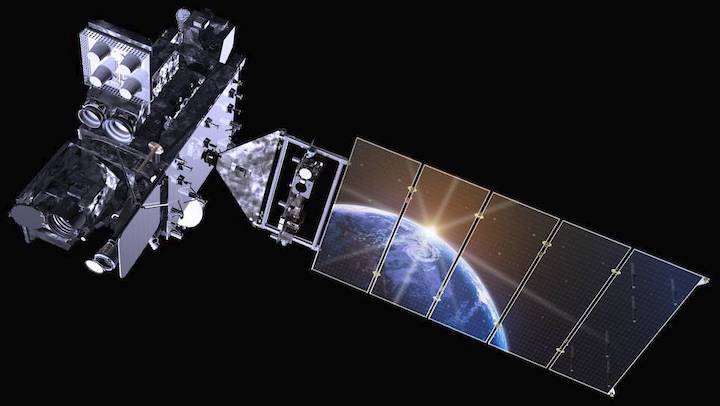
NASA will provide coverage of the prelaunch and launch activities of the National Oceanic and Atmospheric Administration’s (NOAA) next weather observing and environmental monitoring system satellite. Currently known as GOES-T, this is the third satellite in NOAA’s Geostationary Operational Environmental Satellites (GOES) – R series.
GOES-T is scheduled to launch at 4:38 p.m. EST Tuesday, March 1, on a United Launch Alliance Atlas V 541 rocket from Space Launch Complex-41 at Cape Canaveral Space Force Station in Florida. There is a two-hour launch window.
Due to the ongoing coronavirus pandemic, all media participation in news conferences will be remote. A phone bridge will be provided for each briefing.
Live launch coverage will begin at 4 p.m. on NASA Television, the NASA app, and the agency’s website. NASA will hold a science briefing at 1 p.m. Friday, Feb. 25, followed by a prelaunch news conference at 1 p.m. Saturday, Feb. 26.
GOES-T will be renamed GOES-18 once it reaches geostationary orbit. Following a successful orbital checkout of its instruments and systems, GOES-18 will go into operational service as GOES West. In this position, the satellite will provide critical data for the U.S. West Coast, Alaska, Hawaii, Mexico, Central America, and the Pacific Ocean.
All media participation in news conferences will be remote except where noted otherwise.
Full mission coverage is as follows:
Friday, Feb. 25
1 p.m. – GOES-T Science Briefing with the following participants:
- Dr. Dan Lindsey, GOES-R program scientist, NOAA
- Dr. James "Jim" Yoe, chief administrator, Joint Center for Satellite Data Assimilation
- Candace Carlisle, GOES-R flight project manager, NASA’s Goddard Space Flight Center
- Tewa Kpulun, Geostationary Lightning Mapper science lead, Lockheed Martin
- Dr. Daniel Gall, Advanced Baseline Imager chief systems engineer, Space and Airborne Systems, L3Harris Technologies
For the science briefing dial-in number and passcode, please contact the newsroom at NASA’s Kennedy Space Center in Florida at: ksc-newsroom@mail.nasa.gov no later than 4 p.m. Thursday, Feb. 24. Members of the media, as well as the public, also may ask questions, which may be answered in real-time during the segment, by using #AskNASA on social media.
Saturday, Feb. 26
1 p.m. – GOES-T Prelaunch News Conference, with the following participants:
- Steve Volz, acting assistant secretary of commerce for environmental observation and prediction and assistant administrator for satellite and information services, NOAA
- Pam Sullivan, director, GOES-R Program, NOAA
- John Gagosian, director, Joint Agency Satellite Division, Science Mission Directorate, NASA
- Tim Dunn, launch director, NASA’s Launch Services Program, NASA Kennedy
- Scott Messer, program manager, NASA Launch Services, United Launch Alliance
- Jessica Williams, launch weather officer, 45th Weather Squadron, Space Launch Delta 45
For the prelaunch news conference dial-in number and passcode, please contact the Kennedy newsroom at: ksc-newsroom@mail.nasa.gov no later than noon Friday, Feb. 25. Members of the media, as well as the public, also may ask questions, which may be answered in real-time during the segment, by using #AskNASA on social media.
Monday, Feb. 28
10 a.m. – NASA EDGE will host the GOES-T rollout show. The rollout show will air live on NASA TV and YouTube.
Tuesday, Mar. 1
4 p.m. - NASA TV live launch coverage begins.
Audio only of the news conferences and launch coverage will be carried on the NASA “V” circuits, which may be accessed by dialing 321-867-1220, -1240, -1260 or -7135. On launch day, "mission audio," countdown activities without NASA TV launch commentary, will be carried on 321-867-7135. A “clean feed” of the launch without NASA TV commentary will be carried on the NASA TV media channel.
Quelle: NASA
----
Update: 21.02.2022
.
Next GOES weather satellite installed atop Atlas 5
rocket
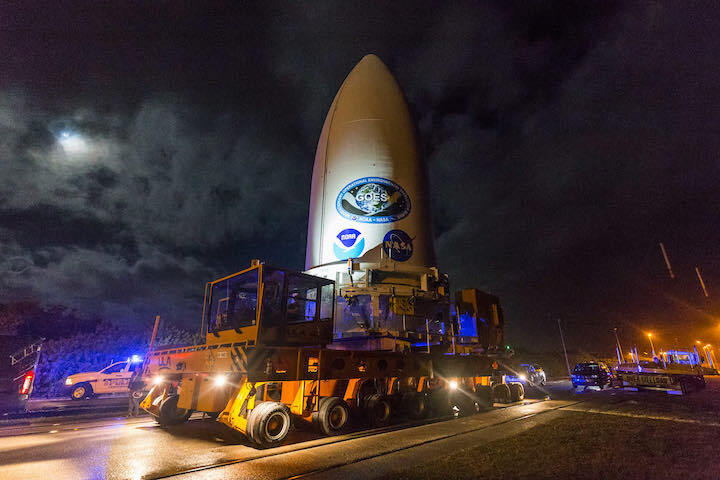
A new weather satellite destined for a perch over the Pacific Ocean and the Western United States was mounted on top of a United Launch Alliance Atlas 5 rocket Thursday at Cape Canaveral, moving a step closer to launch scheduled for March 1.
The GOES-T spacecraft is the latest in NOAA’s fleet of orbiting weather observatories collecting imagery and data to help forecasters predict the development and evolution of severe thunderstorms, hurricanes, and wildfires.
The satellite was encapsulated inside the Atlas 5 rocket’s payload shroud at the Astrotech payload processing facility in Titusville on Feb. 7, then transferred through Kennedy Space Center on Thursday to ULA’s Vertical Integration Facility at Cape Canaveral Space Force Station.
A crane raised the composite payload compartment, containing the GOES-T satellite, on top of the Atlas 5 rocket on its launch platform. The addition of the white nose cone capped assembly of the Atlas 5, standing 196 feet (59.7 meters) tall.
Stacking of the Atlas 5 rocket began last month, when ground crews lifted launcher’s bronze first stage on its mobile platform Jan. 31, 10 days after the previous Atlas 5 launch. ULA next installed four Northrop Grumman-built solid rocket boosters around the Atlas 5’s core stage, then raised the Centaur upper stage atop the first stage Feb. 7.
The rocket will fly in the Atlas 5’s “541” configuration with a 5.4-meter (17.7-foot) diameter payload fairing, four strap-on boosters, and a single RL10 upper stage engine.
The two-hour launch window March 1 opens at 4:38 p.m. EST (2138 GMT). ULA will transfer the Atlas 5 rocket with GOES-T to the launch pad Feb. 28.
The launch with NOAA’s GOES-T weather satellite will mark the 92nd flight of an Atlas 5 rocket since August 2002, and the eighth flight to use the “541” version, following two previous GOES satellites, NASA’s Curiosity and Perseverance Mars rovers, and three spy satellite launches for the U.S. government.
The GOES-T satellite, with a launch weight of more than 11,000 pounds (5 metric tons) fully fueled, was built by Lockheed Martin and arrived in Florida from its Colorado factory in November. Technicians at Astrotech tested the satellite to make sure it survived the cross-country journey, then loaded liquid propellants into the spacecraft for its main engine.
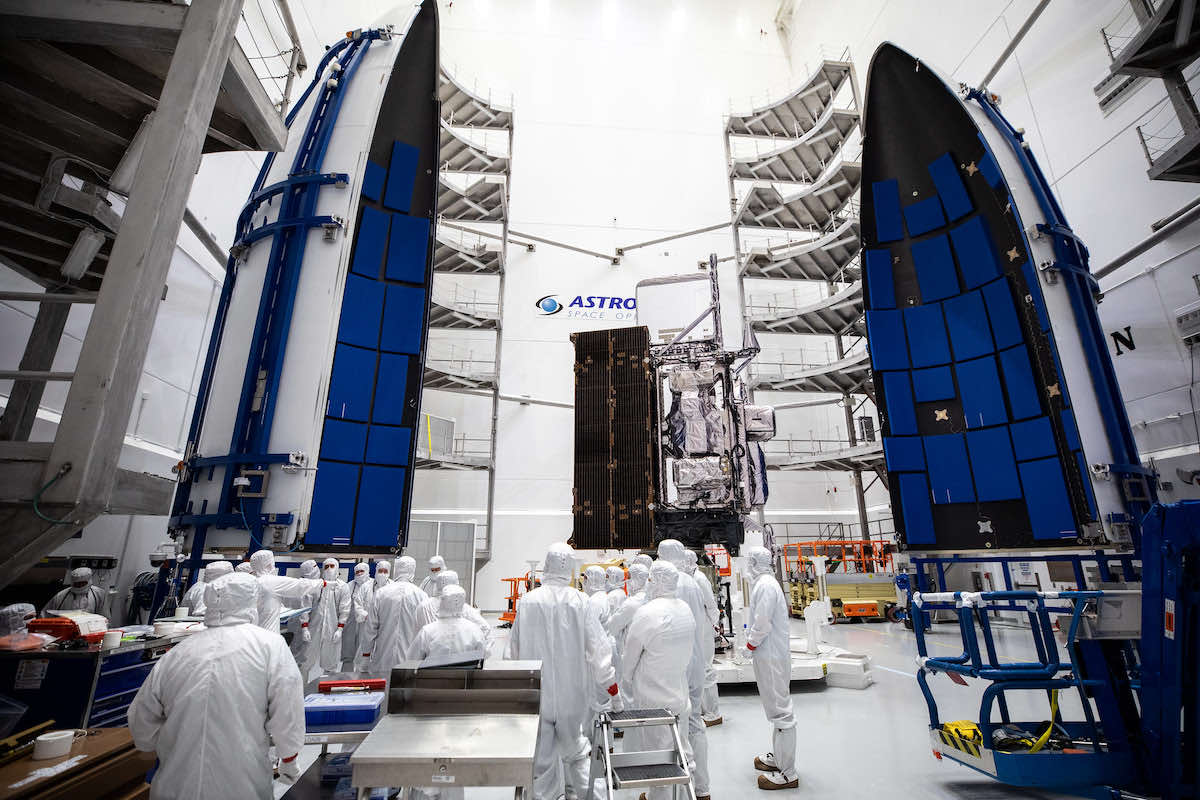
After three burns with the Centaur’s RL10 engine, the Atlas 5 will deploy the GOES-T satellite in an elongated orbit ranging between 5,515 miles (8,876 kilometers) and 21,925 miles (35,286 kilometers). The orbit will be tilted at an angle of 9.4 degrees to the equator.
GOES-T’s own propulsion system will circularize the satellite’s orbit more than 22,000 miles (nearly 36,000 kilometers) over the equator. At that altitude, in geosynchronous orbit, the satellite’s movement will match the Earth’s rotation, giving the spacecraft a constant view of one hemisphere.
NOAA’s Geostationary Operational Environmental Satellites take regularly-updated images of clouds and storm systems, providing real-time views of tropical cyclones and severe weather. The first GOES satellite launched in 1975, and NOAA maintains two operational GOES spacecraft — one covering the Pacific and Western United States, and another over the East Coast, the Caribbean, and the Atlantic Ocean.
NOAA’s weather satellites in polar orbit gather data for medium and long-term forecasts.
GOES-T will be renamed GOES-18 after launch, when it will begin a nearly year-long series of checkouts and tests before NOAA declares the satellite operational. The first weather images from GOES-18 could come down in May, and data from the new satellite could be provided to National Weather Service forecasters on a provisional basis as soon as July, said Pam Sullivan, director of NOAA’s GOES-R program.
The GOES-R series is NOAA’s newest generation of geostationary weather satellites, and GOES-T is the third of four satellites in the group, following launches of GOES-R and GOES-S — now named GOES-16 and GOES-17 — in 2016 and 2018.
By early 2023, GOES-18 will move into the GOES West position to take over from GOES-17, which NOAA will transition to a backup role in the fleet. GOES-16 will remain the active GOES East satellite.
“NOAA’s geostationary satellites provide the only continuous coverage of weather and hazardous environmental conditions in the Western Hemisphere, protecting the lives and properties of the 1 billion people who live and work there,” Sullivan said. “The observations from these satellites are even more critical now when the U.S. is experiencing a record number of billion dollar disasters.”
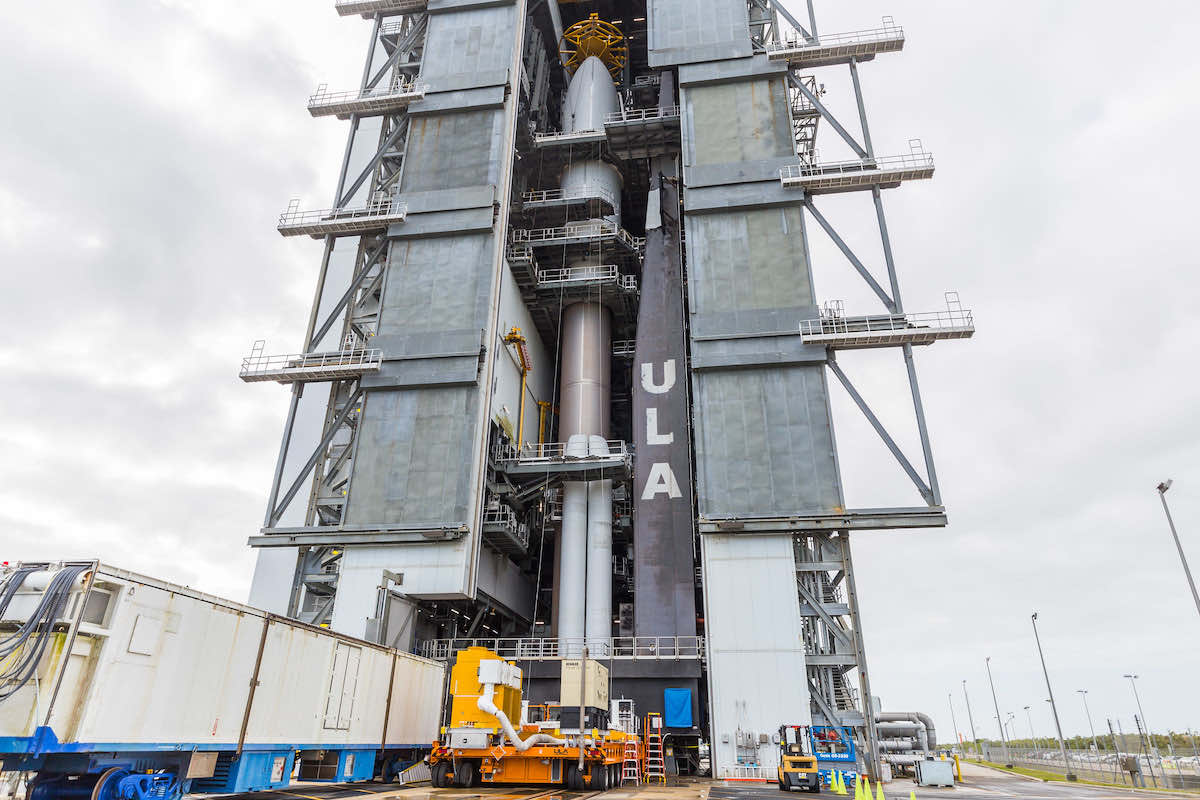
Like the two previous GOES satellites launched in 2016 and 2018, the GOES-T satellite carries six instruments to monitor terrestrial and space weather.
The Advanced Baseline Imager, produced by L3Harris, is the primary instrument. The ABI can see in 16 different visible and infrared wavelengths to determine cloud type, distinguish between clouds, fog and volcanic ash, and track moisture movements inside clouds. Previous GOES satellite cameras could only see in five channels.
Not only can the Advanced Baseline Imager resolve more detail, but the camera can capture images at a faster cadence than previous GOES satellites — hemispheric views every 15 minutes, and imagery of the continental United States every five minutes.
The GOES-R series of satellites can return pictures of hotspots like hurricanes at a cadence of once every 30 seconds, an improvement from the five-minute rapid scans available before 2016.
GOES-T also hosts lightning detectors and sensors to monitor solar activity and space weather.
The new spacecraft set for launch March 1 has several changes from the first two GOES-R type satellites.
The ABI instrument on GOES-17 has degraded function in some of its infrared channels, a problem engineers believe was most likely caused by foreign object debris blocking the flow of coolant in the instrument’s thermal control system. The cooling system malfunction means the instrument’s detectors are unable to stay at the proper temperatures at certain times, leading to intermittent loss off some infrared imagery.
On GOES-T and the GOES-U satellite set for launch in 2024, engineers modified the design of the Advanced Baseline Imager’s radiator to eliminate filters where foreign object debris can become trapped.
The GOES-T satellite also has an upgraded magnetometer instrument provided by NASA’s Goddard Space Flight Center.
NASA partners with NOAA on development of weather satellites, overseeing contracts to develop the spacecraft, instruments, and procure launch vehicles. NOAA operates and owns the satellites.
The GOES-R program is costing $11.7 billion, including expenditures for four satellites, instruments, launch services, and operations, according to Sullivan.
Quelle: SN
----
Update: 23.02.2022
.
A United Launch Alliance Atlas V rocket, meanwhile, will host the Cape's next launch currently slated for Tuesday, March 1. Set to a powerful configuration with four additional solid rocket boosters, the 196-foot rocket will fly from Launch Complex 41 during a two-hour window that opens at 4:38 p.m. EST.
Its mission: deliver the NOAA's newest weather satellite, GOES-T, to geostationary orbit some 22,300 miles above Earth.
Launch Tuesday, March 1
- Rocket: United Launch Alliance Atlas V
- Configuration: 541 (five-meter fairing, four solid rocket boosters, one upper stage engine)
- Mission: GEOS-T weather satellite
- Launch Time: 4:38 p.m. EST
- Launch Window: Two hours
- Launch Complex: 41 at Cape Canaveral Space Force Station
- Trajectory: East
- Weather: Forecast expected this weekend
Quelle: Florida Today
----
Update: 28.02.2022 / 7:00 MEZ
.
Space Force: Weather so-so for ULA Atlas V launch of NOAA satellite
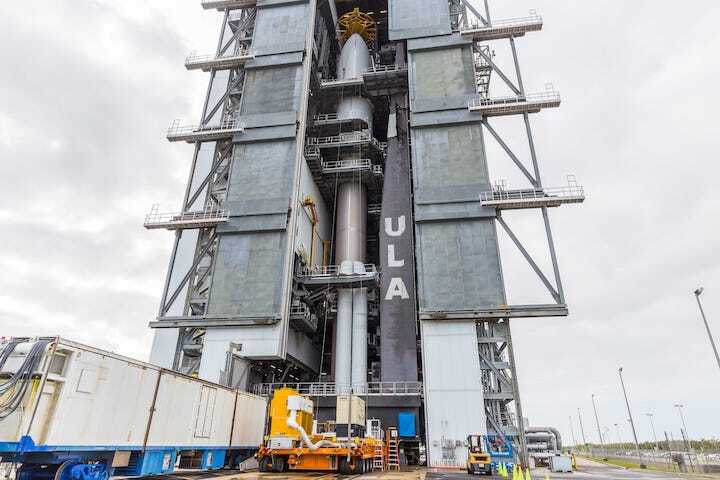
United Launch Alliance's Atlas V rocket is seen in the Vertical Integration Facility at Cape Canaveral Space Force Station with the GOES-T weather satellite in February 2022.
Weather around Cape Canaveral Space Force Station should be mostly "go" for the launch of an Atlas V rocket next week, though conditions are likely to be on the verge of iffy for the mission to launch a weather satellite.
Space Force forecasters on Saturday said the nearly 200-foot United Launch Alliance rocket should see 60% "go" conditions for its 4:38 p.m. EST Tuesday liftoff from Launch Complex 41. Teams will have two hours to launch the National Oceanic and Atmospheric Administration's newest weather satellite labeled GOES-T.
A dry cold front is expected to move through the Space Coast Monday, degrading the forecast into Tuesday's launch window thanks to two troughs, or areas of low atmospheric pressure.
"Both of these will increase rain chances behind the front Monday afternoon through Tuesday, bringing scattered mostly light to moderate rain showers with breezy winds," Space Launch Delta 45 forecasters said Saturday.
Spectators near the Cape should see temperatures of about 68 degrees. Set to a powerful configuration with four solid rocket boosters, the rocket will leave a solid "smoke trail" in its wake as it flies toward the east.
Packed inside Atlas V's payload fairing, or spacecraft protecting nose cone, is the latest NOAA satellite to join the Geostationary Operational Environmental Satellite constellation some 22,300 miles above Earth. Labeled T, the GOES-T satellite will help improve weather forecasting and climate change research and is being launched in partnership with NASA.
All GOES satellites, of which there will be four total, are built by Lockheed Martin near Denver, Colorado, and moved to the Space Coast via Air Force transports. The technological improvements built into the satellites have been widely praised by forecasters and researchers looking to better understand weather patterns and climate change.
In the event of a delay to Wednesday due to weather or technical issues, the forecast improves slightly to 70% "go." This will mark the ninth Florida launch of the year.
Launch Tuesday, March 1
- Rocket: United Launch Alliance Atlas V
- Configuration: 541 (five-meter fairing, four solid rocket boosters)
- Mission: NOAA's GOES-T weather satellite
- Launch Time: 4:38 p.m. EST
- Launch Window: Two hours
- Launch Complex: 41 at Cape Canaveral Space Force Station
- Trajectory: East
Quelle: Florida Today
+++
Update; 17:30 MEZ
.
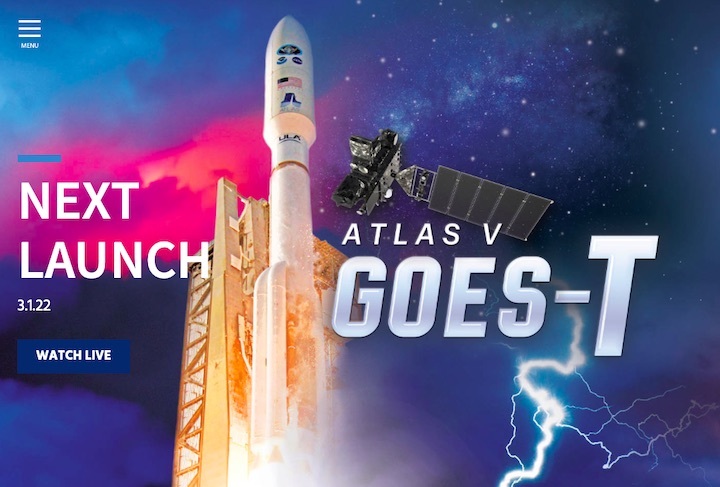
Our Atlas V rocket has arrived at its Cape Canaveral launch pad for Tuesday's liftoff to deliver NOAA's next Geostationary Operational Environmental Satellite (GOES)-T into orbit to observe and track the weather in the Western Hemisphere.
Photo by United Launch Alliance
The MLP has been lowered onto the launch pad piers, accomplishing the "harddown" milestone at 11:23 a.m. EST.
"We are excited to launch the GOES-T spacecraft for our NASA and NOAA mission partners. ULA, and our heritage vehicles, have launched all 17 operational GOES missions to date," said Gary Wentz, vice president of Government and Commercial Programs.
"GOES-T will be delivered to a geosynchronous transfer orbit, which will place the spacecraft closer to its final destination and conserve the satellite's fuel supply for a longer mission life."
Over the next few hours today, umbilical connections will be made with launch pad systems, the environmental control system feeding conditioned air to the rocket and payload will be switched to facility supplies to allow the portable trailers used during rollout to be unplugged and moved away, and the first stage will be loaded with 25,000 gallons of RP-1 fuel, a highly refined kerosene.
The seven-hour launch countdown will start Tuesday morning, leading to a liftoff at 4:38 p.m. EST (2138 UTC).
Our live countdown updates will begin on this page at 9:15 a.m. EST (1415 UTC).
The live video webcast of the launch begins at 4 p.m. EST (2100 UTC) and will also be viewable on this page.
The Atlas V rollout is completing the first 1,800 feet on its journey into space, traveling by rail from the Vertical Integration Facility to the Space Launch Complex-41 pad.
This will be the 92nd flight for Atlas V. The vehicle has a 100 percent mission success record for the Defense Department, the National Reconnaissance Office, NASA and commercial customers.
The Atlas V rollout continues as the rocket completes the first 1,800 feet on its journey into space, traveling by rail from the Vertical Integration Facility to the Space Launch Complex-41 pad.
This will be the 92nd flight for Atlas V. The vehicle has a 100 percent mission success record for the Defense Department, the National Reconnaissance Office, NASA and commercial customers.
Rollout of the Atlas V rocket to launch GOES-T is underway with first motion of the Mobile Launch Platform (MLP) at 10:16 a.m. EST (1516 UTC) to depart the Vertical Integration Facility (VIF).
The VIF is a 30-story building where the rocket stages and payload were put together for this mission. The MLP will travel to the pad with the help of undercarriage railcars and trackmobile machines that push the entire 1.8-million-pound platform and Atlas V 541 rocket along tracks up the hill to the pad.
Photo by United Launch Alliance
A readiness check of systems' status by ULA Launch Conductor Dillon Rice has been completed satisfactorily, and ULA Launch Director Tom Heter III has authorized the rollout to begin.
Pre-roll preps are complete and the weather is acceptable to move the 196-foot-tall rocket on its Mobile Launch Platform to the launch pad.
We are standing by to initiate the roll.
Photo by United Launch Alliance
A weather briefing from Launch Weather Officer Jessica Williams of the weather squadron at the Space Force's Space Launch Delta 45 has verified conditions are acceptable for the rollout, which is expected to begin shortly.
Final preparations are being completed for this morning's rollout of the United Launch Alliance Atlas V rocket from its assembly building to the pad at Cape Canaveral's Space Launch Complex-41.
The transfer will cover a distance of one-third-of-a-mile and position the rocket for Tuesday's countdown and liftoff of the GOES-T mission.
The undercarriage jacks are raising the Mobile Launch Platform from the pedestals inside the Vertical Integration Facility. This is a key precursor for the start of rollout.
The MLP is supported by the undercarriage during the transport to the pad. The jacks will lower the platform onto pad pedestals at the conclusion of rollout.
Welcome to rollout day for the United Launch Alliance Atlas V and NOAA's next Geostationary Operational Environmental Satellite (GOES)-T spacecraft. The rocket will move from the Vertical Integration Facility to the pad at Space Launch Complex-41 in preparation for liftoff Tuesday at 4:38 p.m. EST (2138 UTC).
Photo by United Launch Alliance
Quelle: ULA
----
Update: 1.03.2022
.
GOES-T: ULA Atlas V launch from Cape Canaveral Space Force Station
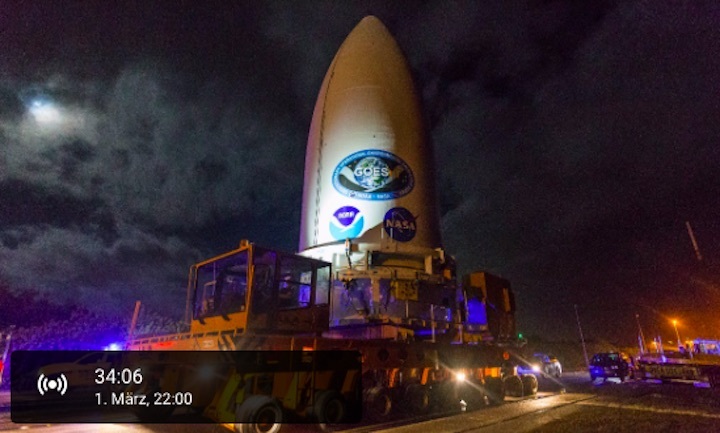
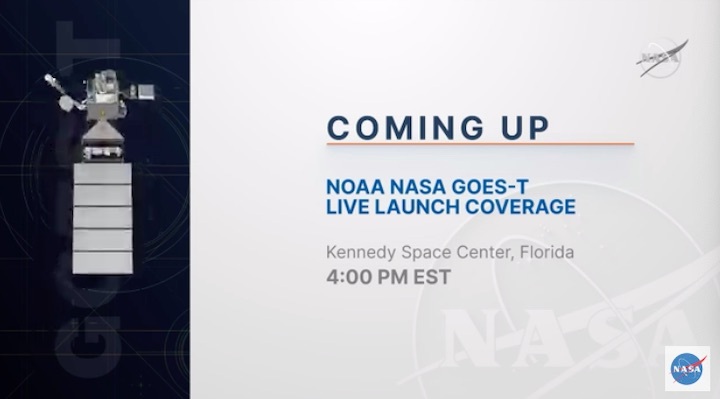
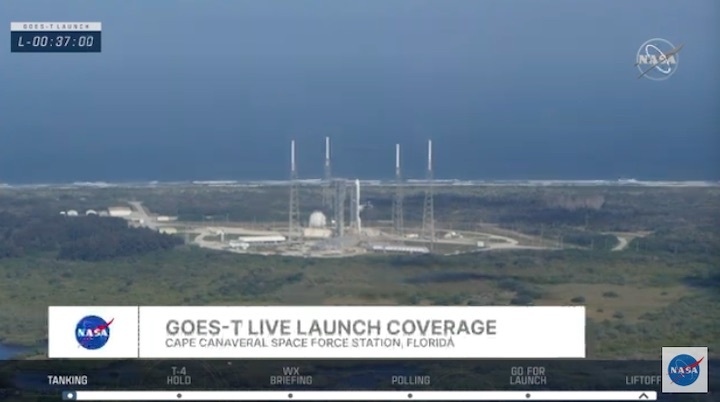
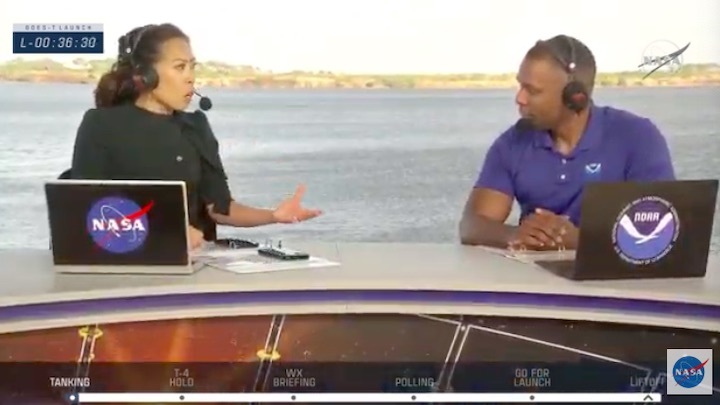
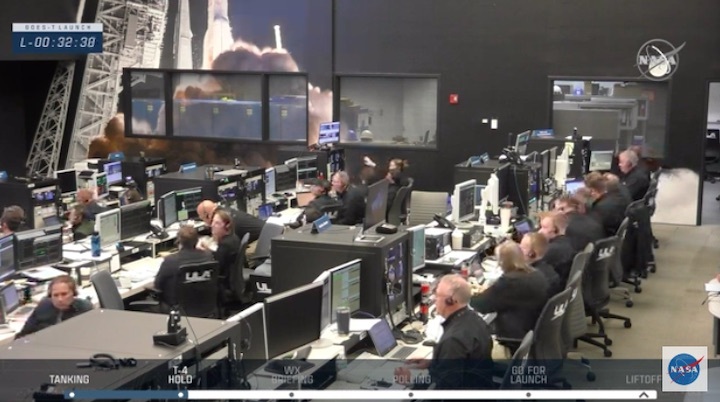
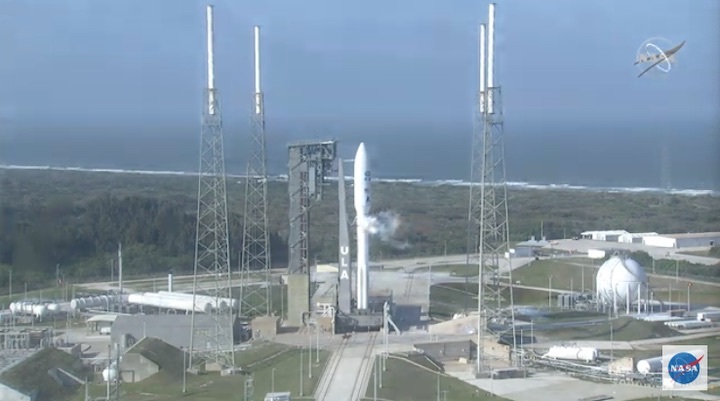
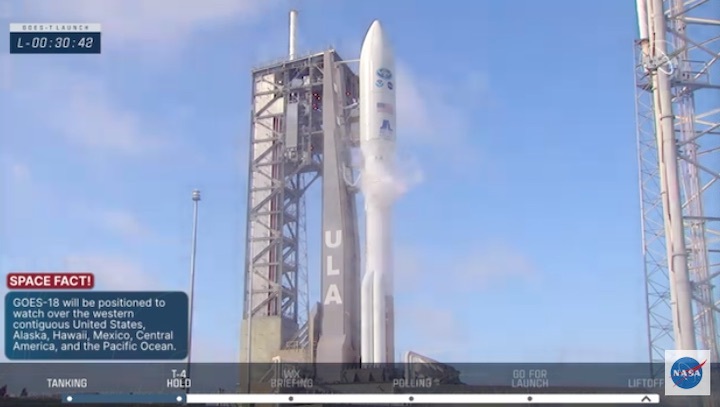
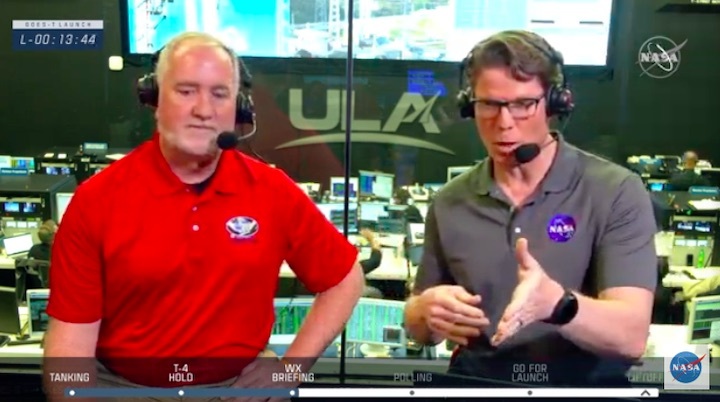
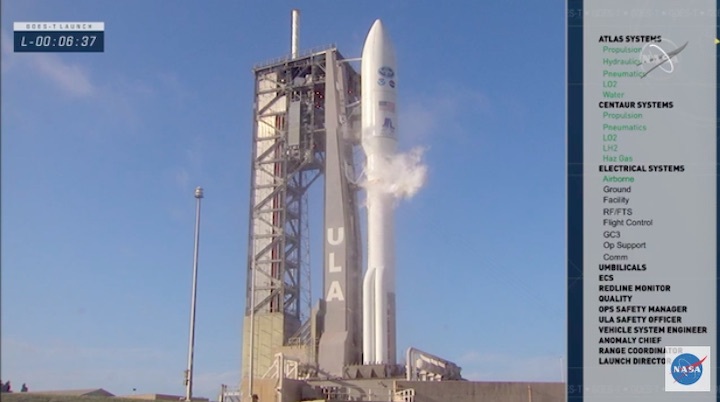
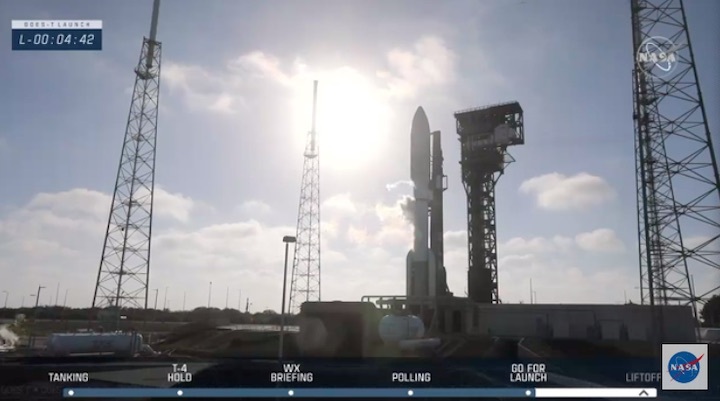
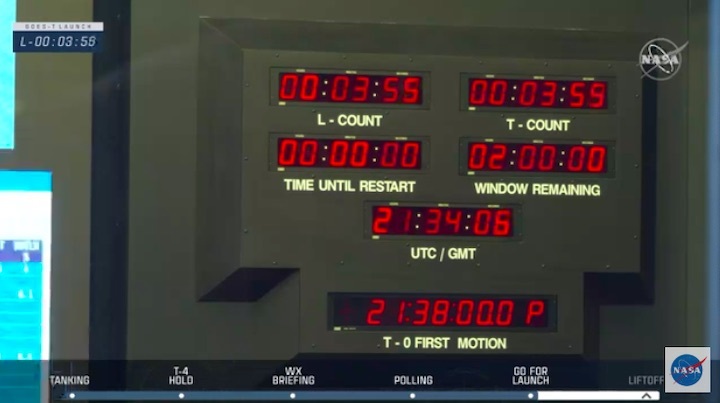
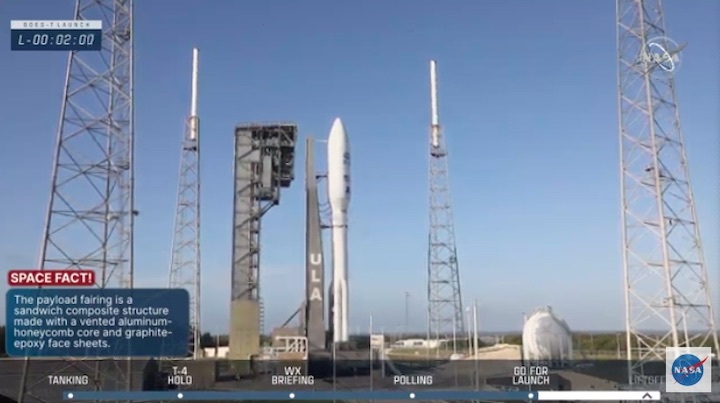
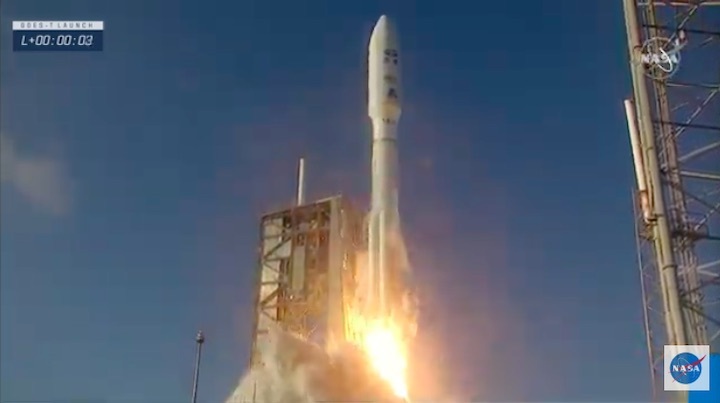
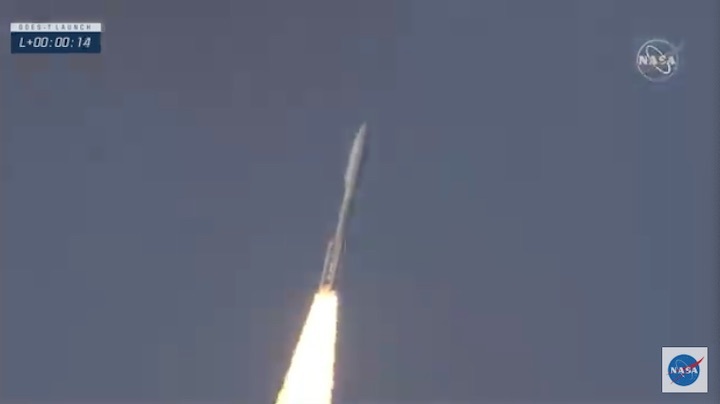
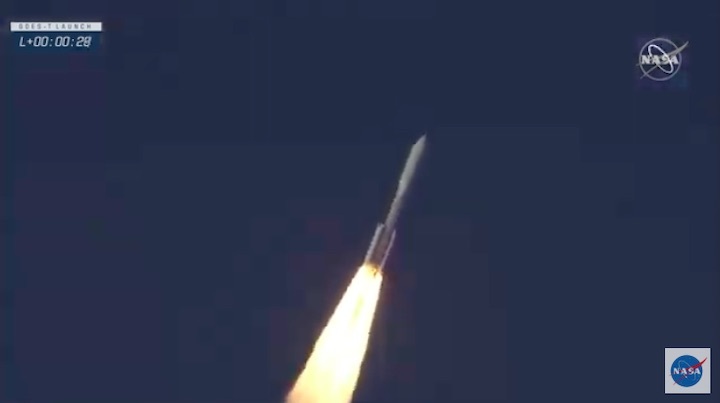
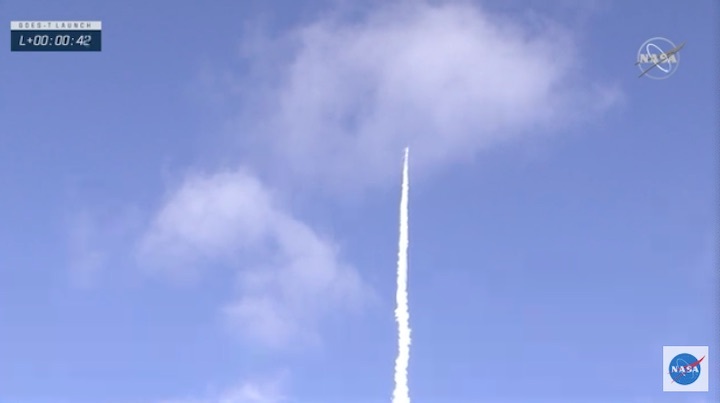
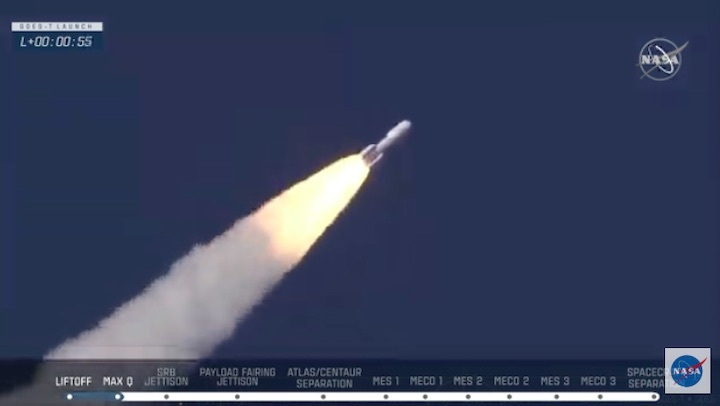
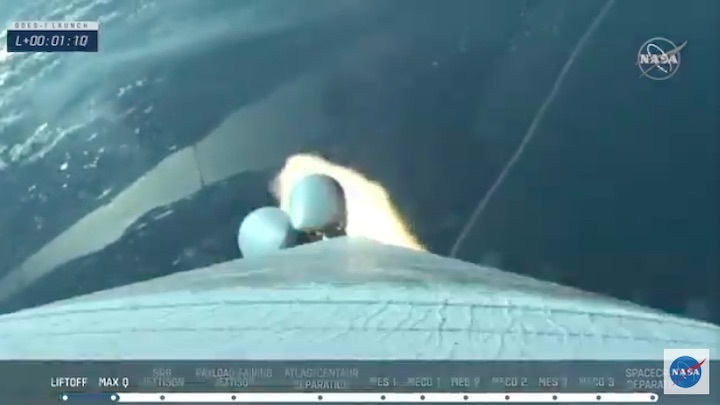
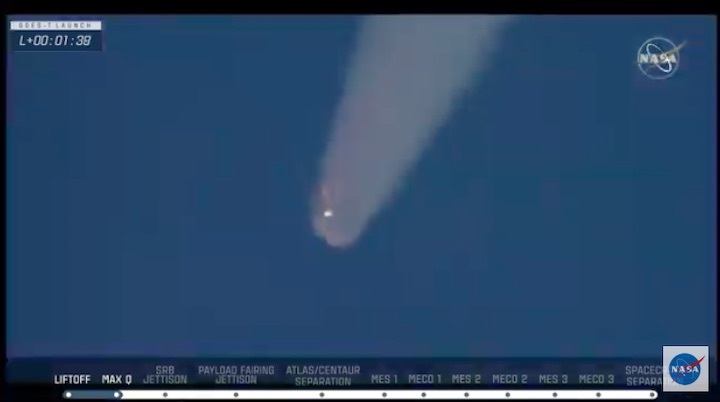
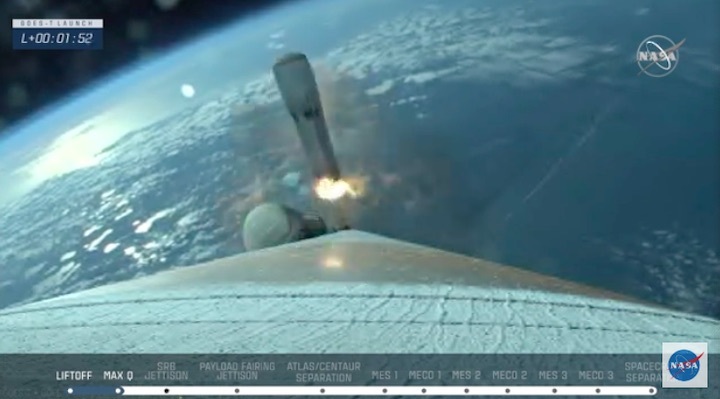
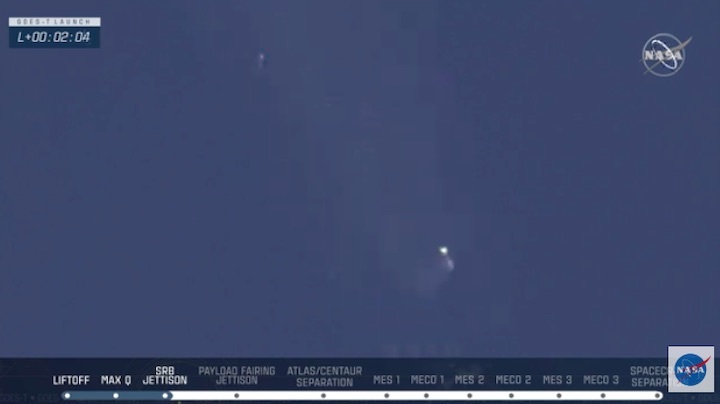
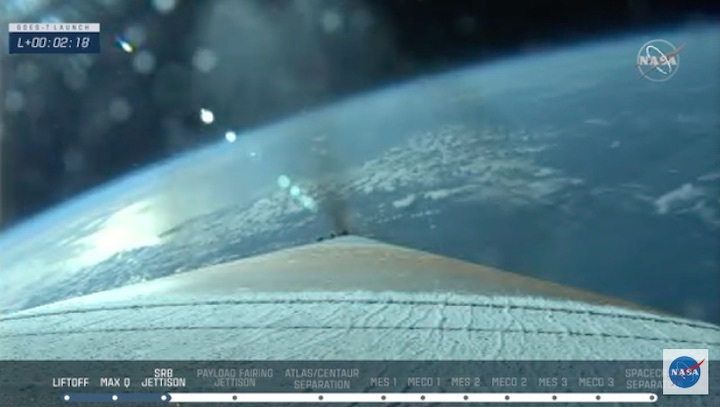
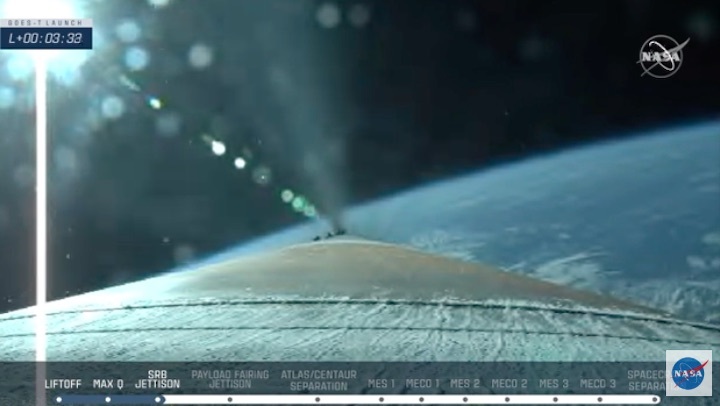
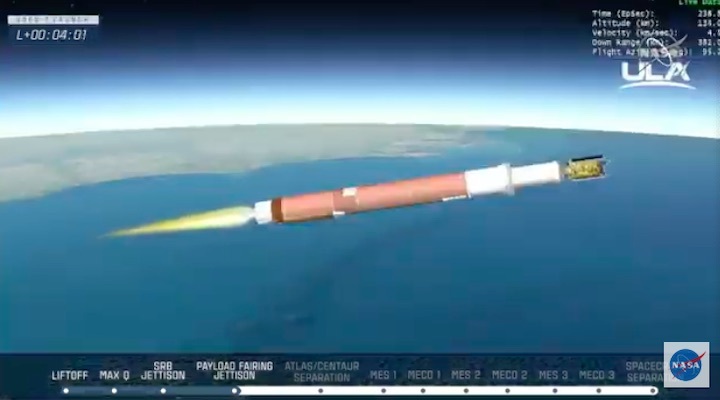
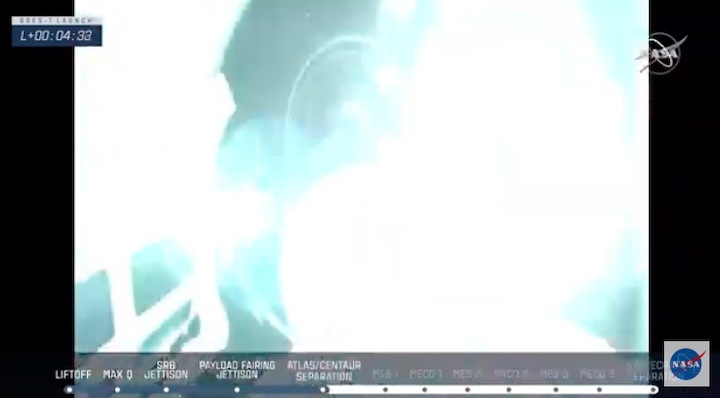
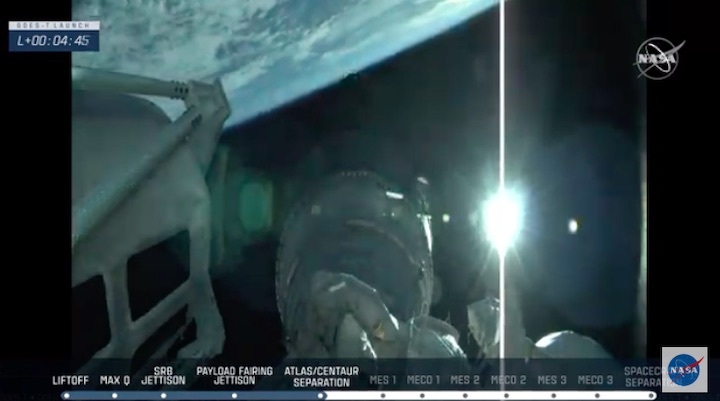
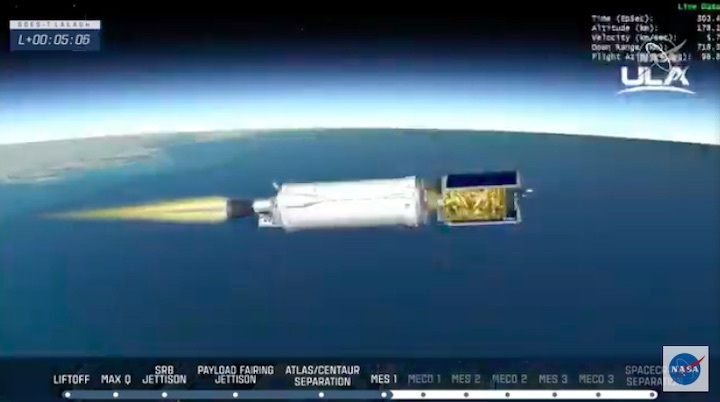
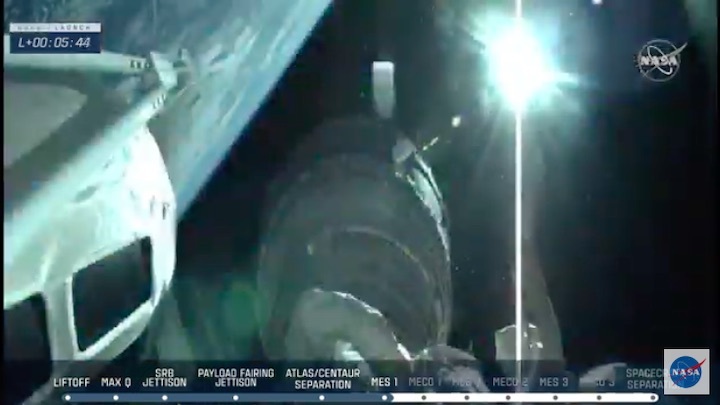
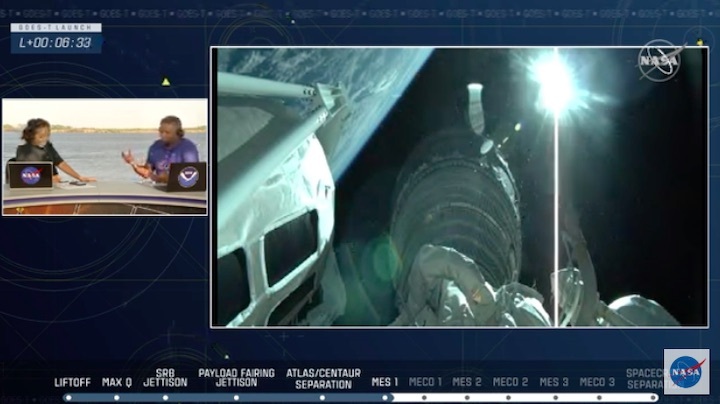
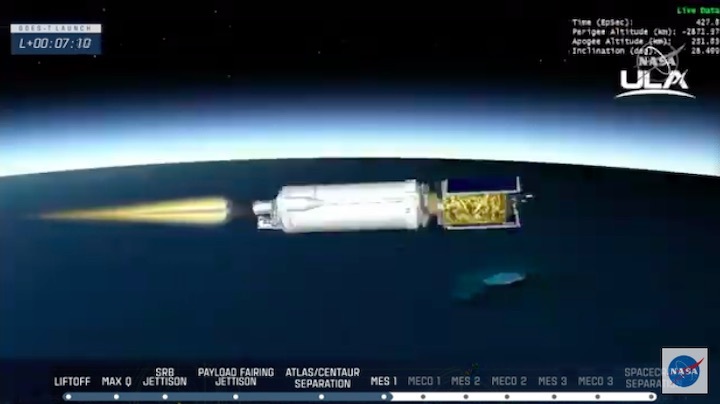
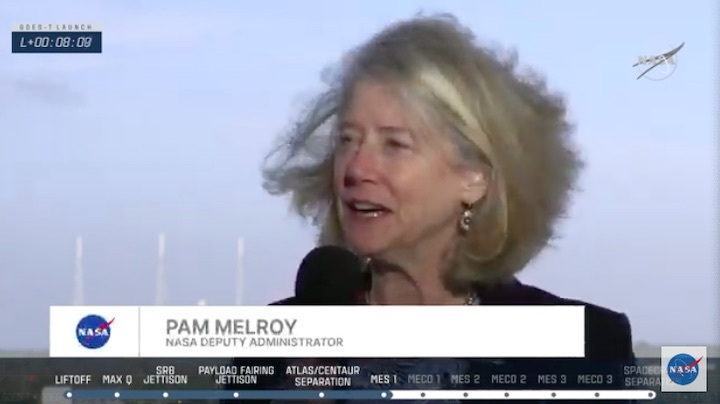
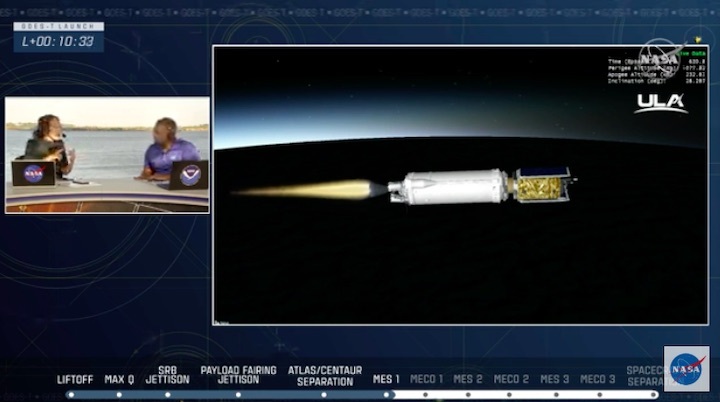
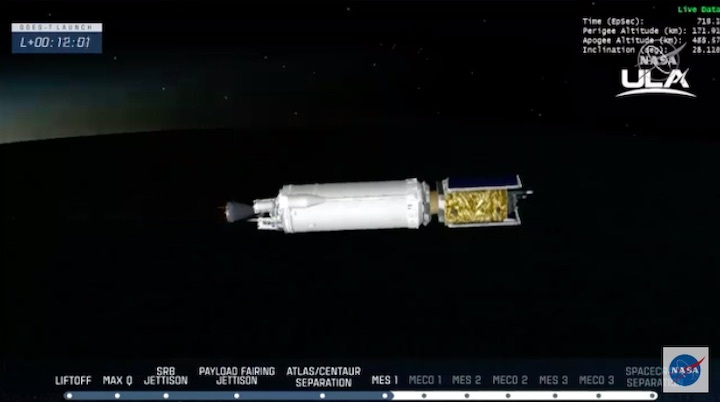
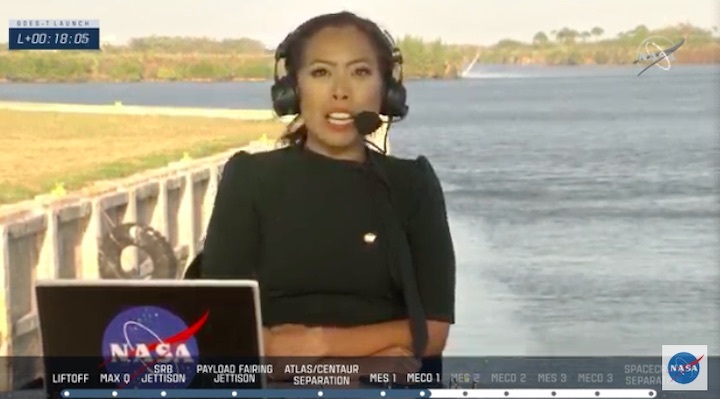
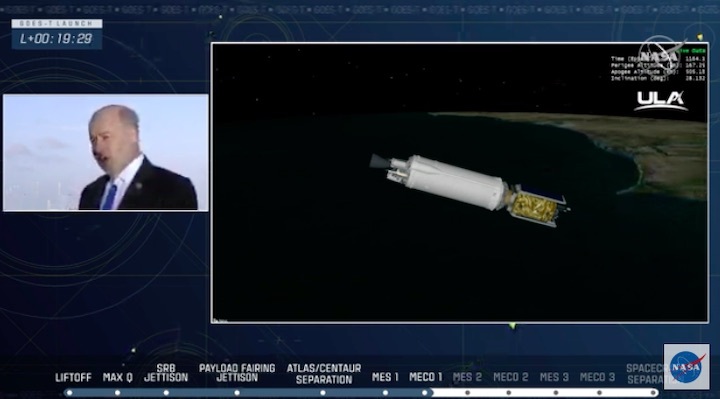
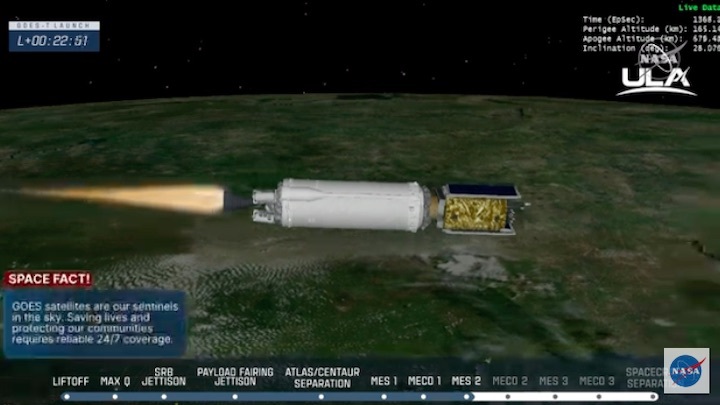
Quelle: ULA














